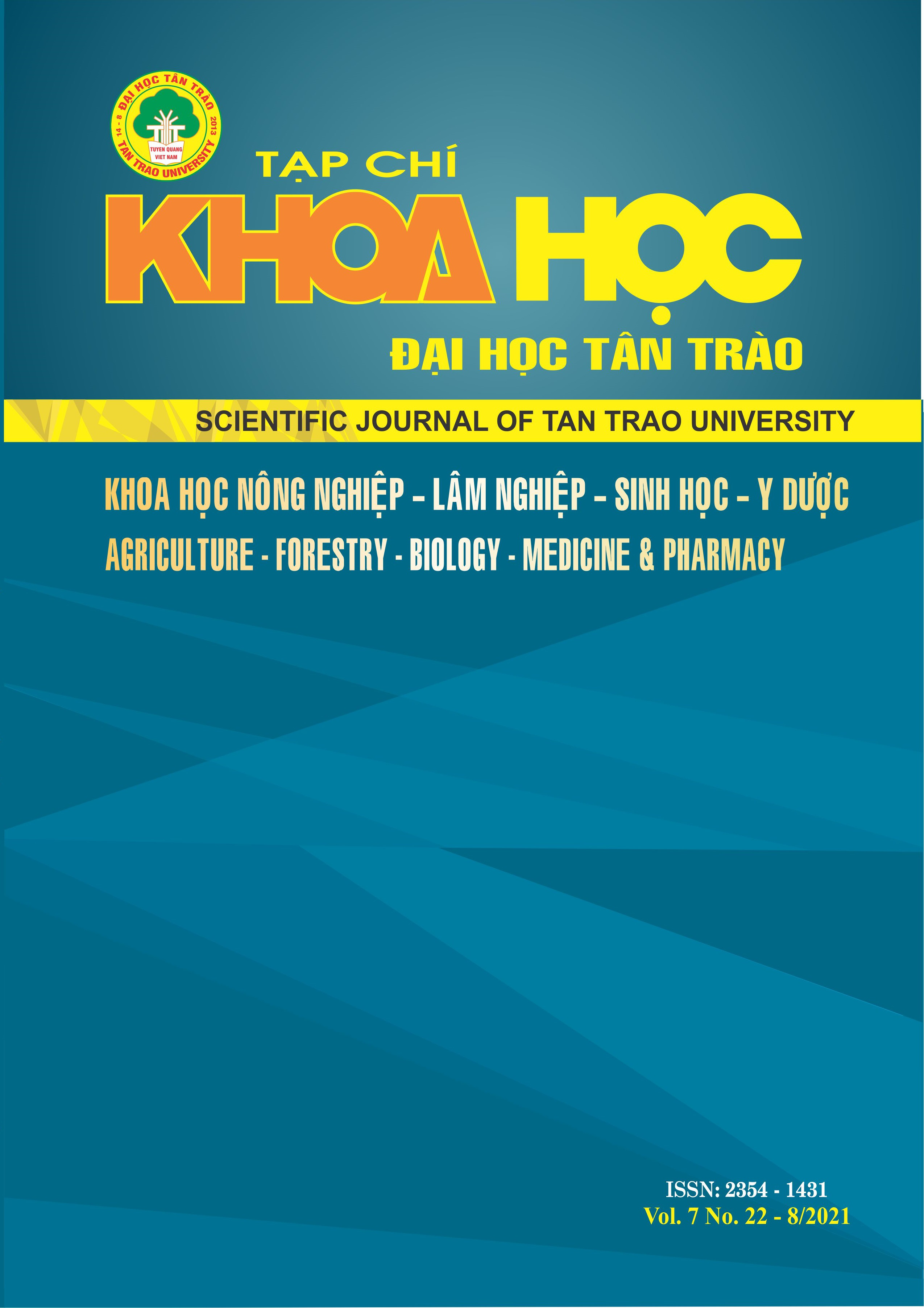TESTING BLACK-HYBRID AND HIGH-YIELD HYBIRD GAC (MOMORDICA) AT TUYEN QUANG, THE FIRST STEP FOR PRODUCTIVITY AND EFFICIENCY
DOI:
https://doi.org/10.51453/2354-1431/2021/574Keywords:
High-yield hybrid Gac and black-hybrid Gac varieties, growth and development, productivity, quality, economic efficiency.Abstract
Gac Momordica cochinchinensis (Lour) Spreng, in Which Black-hybrid Gac and high-yield hybrid Gac are high-productivity, good quality, planted once for many harvesting years, contributing to improving economic efficiency. Research on trial planting of black-hybrid and high-yield hybrid Gac varieties in Tuyen Quang has initially shown positive results, plants grow and develop well, with a planting density of 500 trees/ha; well implement techniques of planting and making solid trusses; timely monitoring and control of pests and diseases. The results are more efficient and efficient than the local gac sticky variety (The real yield in the first year of the black-hybrid gac is 133,5 quintals/ha, the efficiency is 50.298.000 VND/ha; high-yield hybrid Gac reached 144,2 quintals/ha and the efficiency is 49.408.000 VND/ ha).
Downloads
References
[1] Khanh, T. H. (2012). Comparison of yield and quality of three strains of Gac Momordica cochinchinensis (Lour.) Spreng grown on alluvial soil. Journal of Science, 24a:290-298.
[2] Loi, D. T. (2006). Vietnamese medicinal plants and medicinal herbs. Medicine Publisher
[3] Luong, L. D. (1988). Effect of repairing DNA damaged by ultraviolet rays of Gac oil Vietnam. Journal of Genetics and Applied Sciences
[4] Toan, P. D. (2014). Potentials, prospects and cultivation techniques of Gac tree with high yield and quality
[5] Thi, N. D. (2017). Some technical measures to produce commercial black hybrid gac in Nghe An. Journal of Science - Hue University, ISSN 2588–1191.
[6] Vy, N. T. (2008). Research on chemical composition and contribute to standardization of the quality of Vietnamese Gac oil used as medicine. Doctoral thesis in Pharmacology, Hanoi University of Pharmacy.
[7] Vietnam Standard. (2010). (QCVN 01-38: 2010/BNNPTNT by the Drafting Committee of the National Technical Regulation on Plant Pest Detection Methods).
Downloads
Published
How to Cite
Issue
Section
License

This work is licensed under a Creative Commons Attribution-ShareAlike 4.0 International License.
All articles published in SJTTU are licensed under a Creative Commons Attribution-ShareAlike 4.0 International (CC BY-SA) license. This means anyone is free to copy, transform, or redistribute articles for any lawful purpose in any medium, provided they give appropriate attribution to the original author(s) and SJTTU, link to the license, indicate if changes were made, and redistribute any derivative work under the same license.
Copyright on articles is retained by the respective author(s), without restrictions. A non-exclusive license is granted to SJTTU to publish the article and identify itself as its original publisher, along with the commercial right to include the article in a hardcopy issue for sale to libraries and individuals.
Although the conditions of the CC BY-SA license don't apply to authors (as the copyright holder of your article, you have no restrictions on your rights), by submitting to SJTTU, authors recognize the rights of readers, and must grant any third party the right to use their article to the extent provided by the license.


